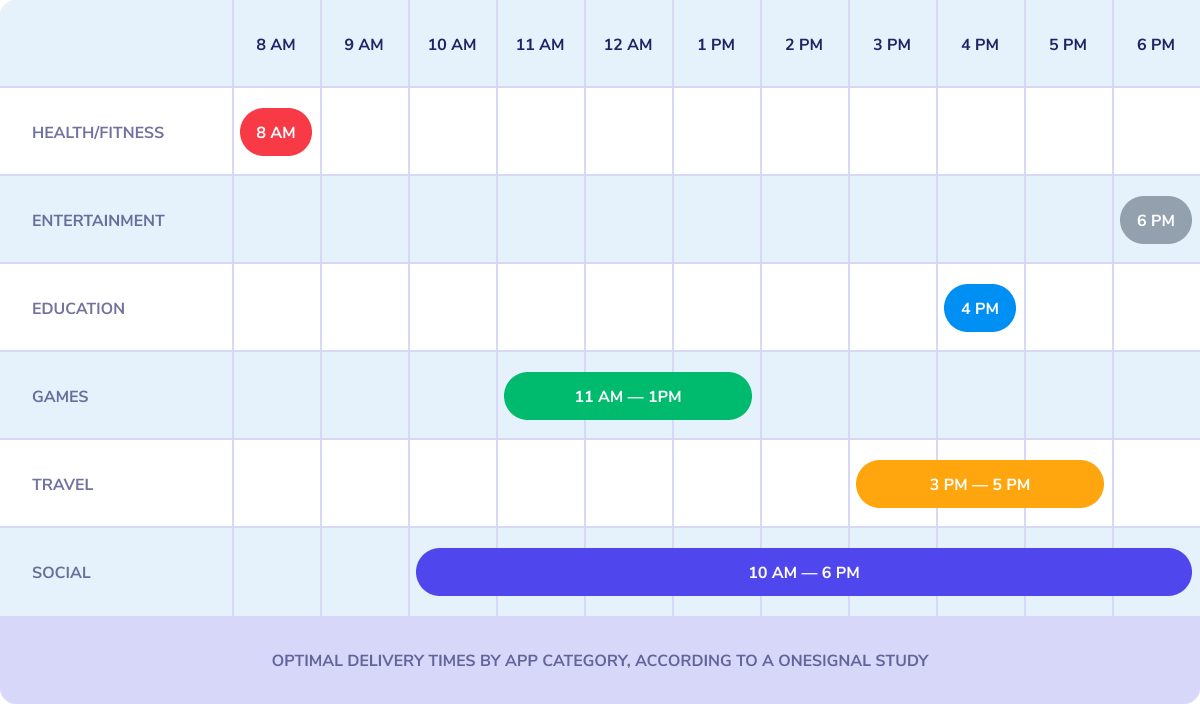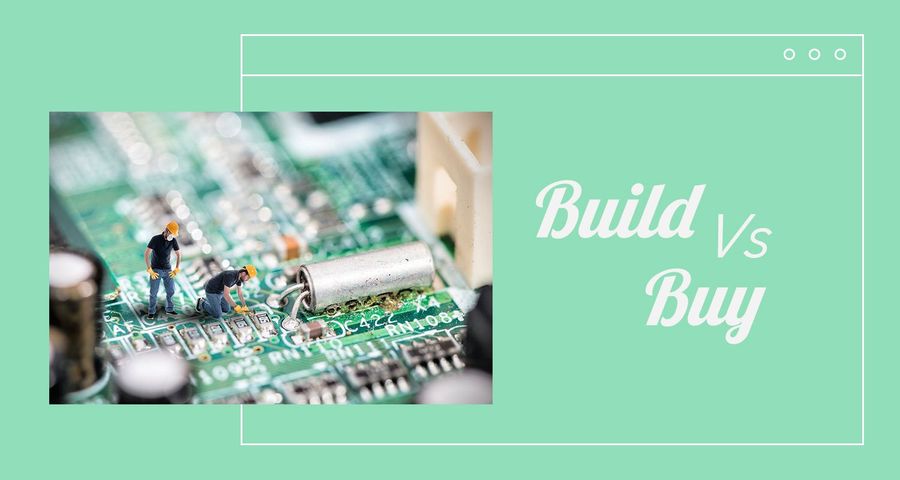OneSignal is the most popular push notification solution, used by more than 70% of sites with web push (source: BuiltWith). OneSignal also provides mobile push notifications with more SDK Integrations than all other push platforms combined (source: TheNeura). Over 1 million developers and marketers use OneSignal to deliver push notifications. Our customers range from individual app developers to Fortune500 Companies.
What makes OneSignal so special? Why don’t more companies build their own push system?
Before we dig into the complexities of building a push notification system, let’s establish how most companies determine whether to build or integrate.
Cost to Build = Initial Build Time (months) + Hosting Costs for Various Device Types + Cost to Maintain + Cost of Updating for Every Software Update + Cost of Adding Features (e.g. A/B Testing, Segmentation, Prompting Subscribers) + Building and Maintaining Security + Opportunity Cost
Opportunity costs of building your own platform:
-Fewer subscribers - it takes months to build your own system, and subscriber prompting is complex
-You'll need 2-4 full-time developers to build and maintain your push notification system instead of core business products
-You risk annoying / losing customers when bugs inevitably arise
-Time required to manually perform tasks such as segmentation because automating these features is incredibly complex
Cost to Integrate OneSignal = 15 minute setup + a few hours integrating with your existing systems to segment users and track results + third party provider costs (plans start at $9/month)
Benefits of integrating OneSignal:
- Better prompting means you’ll get more subscribers
- Built in segmentation to ensure your messages are highly relevant: OneSignal makes it easy to segment users by type of content they viewed and/or push notification topics they click into
- Messages can be triggered by your user’s location
- Rich media: audio, gifs, video, emojis
"We’re not interested in developing our own system because we understand that creating something like OneSignal will take a lot of time. It’s just easier to have something that’s already made for what you need.” - Yuliia Hryshchenko, Retention Specialist at BetterMe
Many OneSignal customers tried to build their own delivery system before they came to us. This is true even of tech companies such as HQTrivia, which developed and launched their own push notification system before switching to OneSignal.
In general, buying a push notification system is more affordable because of all the complexities surrounding building the system and ensuring delivery to the correct audience.
Estimating Build Time & Skills Required
If you build your own push notification system, you’ll need to acquire equipment, build security around it, and create a tracking system.
At OneSignal, engineers typically spend 60% of their time building new features and 40% of their time maintaining existing features - this means 15-25 hours/week is spent on code changes, improvements and bug fixes. We also have two dedicated support engineers whose full-time job is reproducing issues and identifying their cause.
To build a push platform, you’ll need to find developers who:
-Know Java, Objective-C, C#, Javascript, TypeScript, Dart, C/C++, Lua…
-Understand Rest API calls, native iOS and Android APIs
-Have experience in build systems, handle concurrency, code reusability, extensive unit testing, and general optimization to ensure the SDKs are performant
As you scale your push system, the workload increases exponentially on top of constantly monitoring delivery performance. You need hardware to maximize performance, delivery speed, and consistency. This involves multithreaded applications and parallelization, which few people know how to do.
To build and maintain your own system with basic functionality, budget 2-4 full-time engineers.

For security, you will need provisioning certificates for server-to-server communication. All mobile devices must be provisioned with a unique token to make sure that notifications get to the right people. After all, no one wants their phone buzzing in the middle of the night for a notification meant for someone else.
Sending Messages to the Wrong Devices Could Get You BANNED
For delivery to work, your backend must connect to the right push notification servers (e.g. Apple, Android, etc.) with unique device tokens. It must ping the servers to let them know there are live messages waiting for transfer.
What if someone deletes or unsubscribes from your app and you still try to send a push notification?
Although they shouldn’t receive push notifications after uninstalling your app, the push notification servers will still try to send notifications to people who deleted your app.
Because of this, push notification services like Apple require you to periodically interface with a feedback service to get a list of device tokens that are no longer used. If your backend continues to send notifications to unused tokens, all of your push notifications could get blocked.
Building Features to Increase Click Through Rates
If you send the same notification to everyone, it won’t be relevant to all users. Over time, your users will unsubscribe, or worse - delete your app.
As your user base grows, segmenting is becomes increasingly important… and expensive if you build your own push platform.
You will also want to experiment with different notifications on similar audiences. Forget A/B testing, you’ll want to do multi-variant testing before sending your most important messages, such as abandoned cart reminders. Building multi-variant testing features takes several weeks and most app builders don’t have the required expertise.
OneSignal also offers features such as Intelligent Delivery, that leverage machine learning and usage data only we have access to. When you send messages through OneSignal, you benefit from learnings acquired by sending BILLIONS of notifications every day.

Summary
Integrating OneSignal is easier and more cost efficient than building your own for the following reasons:
- Building and maintaining the hardware and software is expensive and requires developers with very specialized skills
- Integrating OneSignal requires very little development expertise
- If you go with OneSignal, you can start getting subscribers instantly, instead of waiting months for your system to be built
- You never need to worry about getting shut down because you sent notifications to unsubscribed users
- OneSignal provides robust features guaranteed to increase improve your customer engagement. We offer a multi-channel platform that includes push, in-app, email, and SMS.
- Building the ability to send push notifications is really only part of the battle. Consider the dashboards, UI, SDKs...
If you still aren’t convinced, try building your own. We invite you to follow OneSignal to stay up to date on hardware and software changes. All of our documentation is open so you can understand what you’ll need to build for different devices. And when you hit a wall, we’ll be here. Schedule a demo with a push expert - you can talk to someone right now!
If you go with OneSignal, you'll be in great company. OneSignal delivers push notifications for companies including Zynga, LG, Burger King, Virgin Mobile, KFC, 7-Eleven, CouchSurfing, Acer, Eventbrite, Product Hunt, and more.
Easily Send Notifications with OneSignal
OneSignal is designed to help you send notifications and seamlessly manage your user communication across every channel, including mobile push notifications, web push notifications, bulk SMS, in-app messaging, and email. Our platform is quick to set up and makes it easy to customize and automate your messaging strategy without doing any development work. If you don't have a OneSignal account, you can create one for free and start sending push notifications to your users today. Don't take our word for it — sign up and see for yourself!
Create a Free Account



